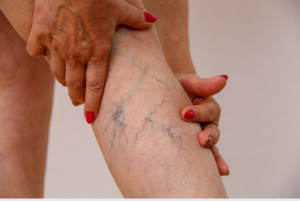Posted on January 23, 2023
Varicose Vein Removal Methods
There are a few different methods of varicose vein removal. These methods include compression stockings, foam sclerotherapy and laser ablation. The most effective way is usually based on your personal preferences. For instance, some individuals may not be interested in foam sclerotherapy or laser ablation, while others might be more open to these methods.
 Foam sclerotherapy
Foam sclerotherapy
Foam sclerotherapy is a method of treatment for varicose veins. It is a minimally invasive procedure that requires little recovery time.
Foam sclerotherapy works by injecting a sclerosing agent into the veins, causing an unsightly swollen appearance. The sclerosing agent, a medication, displaces blood and destroys cells in the lining of the affected vein.
A foam sclerotherapy session generally takes less than an hour. Patients are encouraged to rest during the treatment, although they should remain mobile throughout the process. They should also avoid strenuous activities, such as standing for long periods.
The sclerosing agent is injected into the affected vein through a needle. When the veins are sealed, the blood is forced to reroute to healthy veins. This results in the gradual disappearance of unsightly veins.
Varicose veins can be a problem for many people, but the good news is that several methods are available to treat them. One of the most common is ultrasound-guided sclerotherapy with foam.alked to your doctor about the various options for treating your varicose veins. The goal is to find a solution that will provide you with the most effective results.
Depending on the severity of your varicose veins, you may need more than one sclerotherapy session. You should wait at least six weeks before having another sclerotherapy session.
Although foam sclerotherapy is an effective method for varicose vein removal South Australia, there are specific side effects. These include redness, minor burning and skin sores. After the procedure, your doctor will tell you if you need to return for additional treatment.
During the procedure, your nurse will be present to answer any questions you might have. Occasionally, music will be played.
Laser ablation
Laser ablation for varicose veins is an effective treatment. Although not invasive, laser ablation has minimal side effects. It also requires no downtime and can be done in the comfort of a doctor’s office. However, the procedure may require local anesthesia.
Varicose veins form when vein valves fail to close correctly. It causes blood to flow against the vein wall, creating a bulging effect. Once the vein is closed, blood is diverted to nearby healthy veins, causing it to fade and improve circulation.
In the case of endovenous laser therapy, a small catheter or fibre is inserted into the abnormal vein. Then, using ultrasound guidance, the doctor guides the catheter or fibre into the vein and seals it. A thin laser fibre is then fed into the vein, delivering energy that fills it.
During the procedure, a local anesthetic is administered around the vein. A small hole is then made in the skin, which is then covered with a bandage.
Before the procedure, the area to be treated is cleaned and prepped. Patients are also given compression socks to help decrease bruising. In addition, special goggles are sometimes used to protect the eyes.
Typically, patients are checked in and released less than an hour after the procedure. However, it may take weeks to complete the results. Some patients experience minor discomfort and swelling, although these are treatable with over-the-counter nonsteroidal anti-inflammatory medicines.
After the procedure, the patient is generally advised to avoid strenuous activity. They should also only stand for a short period. Ideally, patients should walk in short sessions for several minutes each hour. Walking can help speed up healing.
EVLA is considered an extremely safe and effective method of varicose vein removal. However, depending on the severity of the problem, some patients may need to undergo additional procedures.
Ambulatory phlebectomy
Ambulatory phlebectomy (AP) is a minimally invasive varicose vein removal South Australia procedure to remove varicose veins. The process is simple and can be performed in a doctor’s office. A phlebectomy is done under local anesthesia and takes less than an hour.
During ambulatory phlebectomy, a hook is inserted through a small incision to break up vein adhesions and extract damaged veins. These tiny incisions are typically two to five millimetres in size.
During the procedure, a vein is carefully identified and marked. It is then gently numbed with a dilute anesthetic.
A small incision is made near the vein, and a phlebectomy hook with a blunt tip is inserted. This hook is then used to pull the damaged vein section by section.
After the surgery, the patient is instructed to wear compression stockings for some time. Wearing these stockings will help with the healing process and minimise swelling.
Some patients will experience mild postoperative pain. If the discomfort becomes too much, they can take ibuprofen or Tylenol. However, most patients will not feel pain during or after the phlebectomy procedure.
Typically, a patient can return to work the same day. They may also wear a daytime compression stocking for a week or so. Patients should also hold off from moderate to heavy lifting for two weeks.
Phlebectomy is a safe and effective treatment to improve the appearance and decrease varicose veins’ symptoms. In addition, patients can expect a noticeable improvement in their health, self-confidence and comfort levels.
Often, patients who have had a phlebectomy will tell their doctors that they wish they had had it earlier. Most patients find the procedure painless, although bruising and swelling are common.

